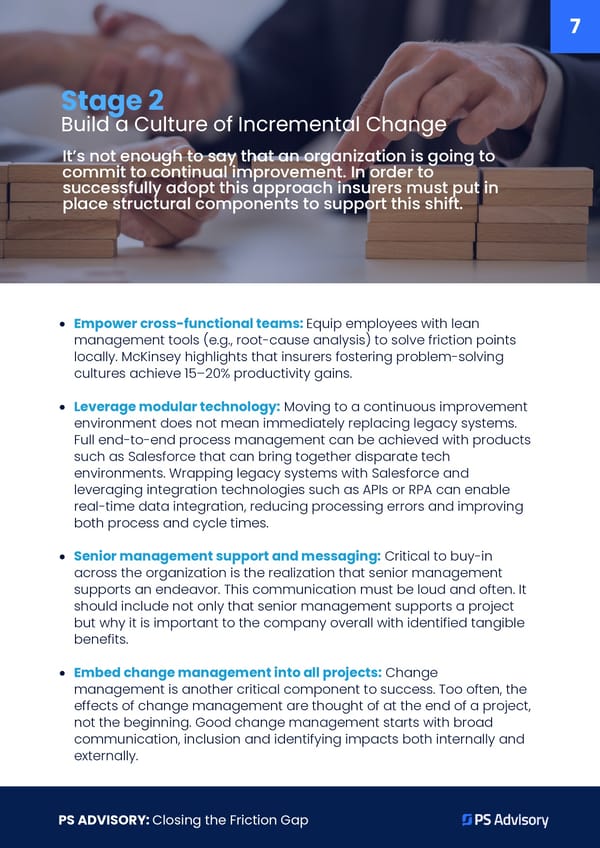Empower cross-functional teams: Equip employees with lean management tools (e.g., root-cause analysis) to solve friction points locally. McKinsey highlights that insurers fostering problem-solving cultures achieve 15–20% productivity gains. Leverage modular technology: Moving to a continuous improvement environment does not mean immediately replacing legacy systems. Full end-to-end process management can be achieved with products such as Salesforce that can bring together disparate tech environments. Wrapping legacy systems with Salesforce and leveraging integration technologies such as APIs or RPA can enable real-time data integration, reducing processing errors and improving both process and cycle times. Senior management support and messaging: Critical to buy-in across the organization is the realization that senior management supports an endeavor. This communication must be loud and often. It should include not only that senior management supports a project but why it is important to the company overall with identified tangible benefits. Embed change management into all projects: Change management is another critical component to success. Too often, the effects of change management are thought of at the end of a project, not the beginning. Good change management starts with broad communication, inclusion and identifying impacts both internally and externally. Stage 2 Build a Culture of Incremental Change PS ADVISORY: Closing the Friction Gap It’s not enough to say that an organization is going to commit to continual improvement. In order to successfully adopt this approach insurers must put in place structural components to support this shift. 7
 Closing the Friction Gap: A Continuous Improvement Roadmap for Insurers Page 8 Page 10
Closing the Friction Gap: A Continuous Improvement Roadmap for Insurers Page 8 Page 10